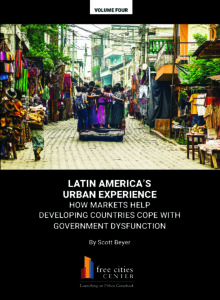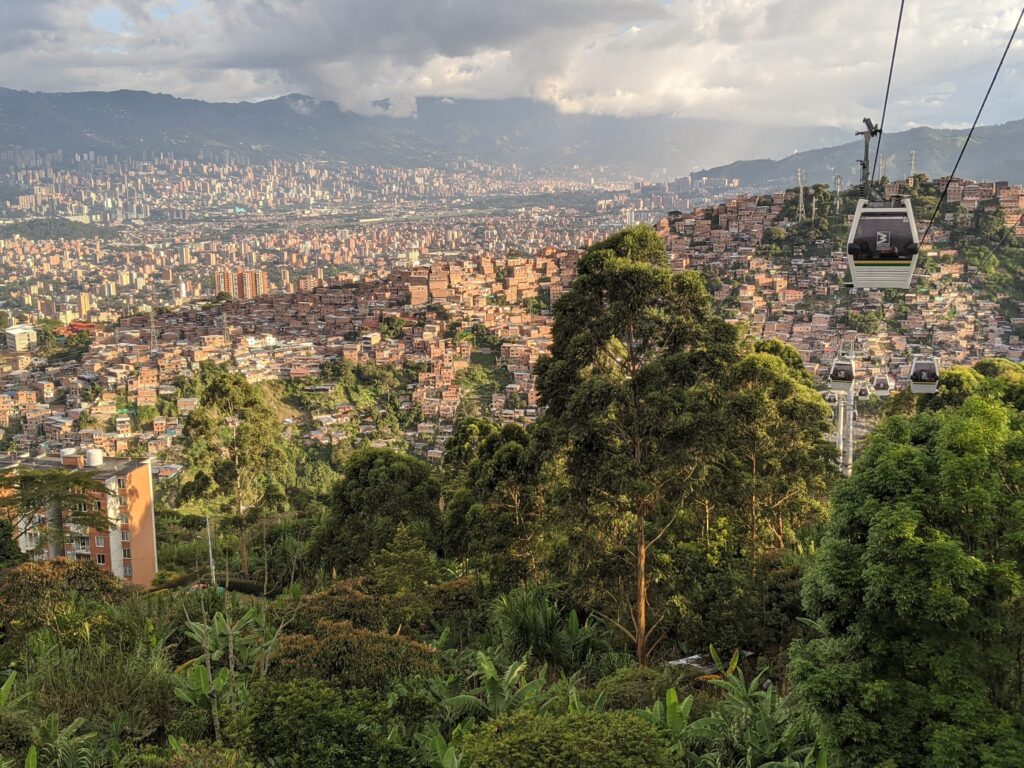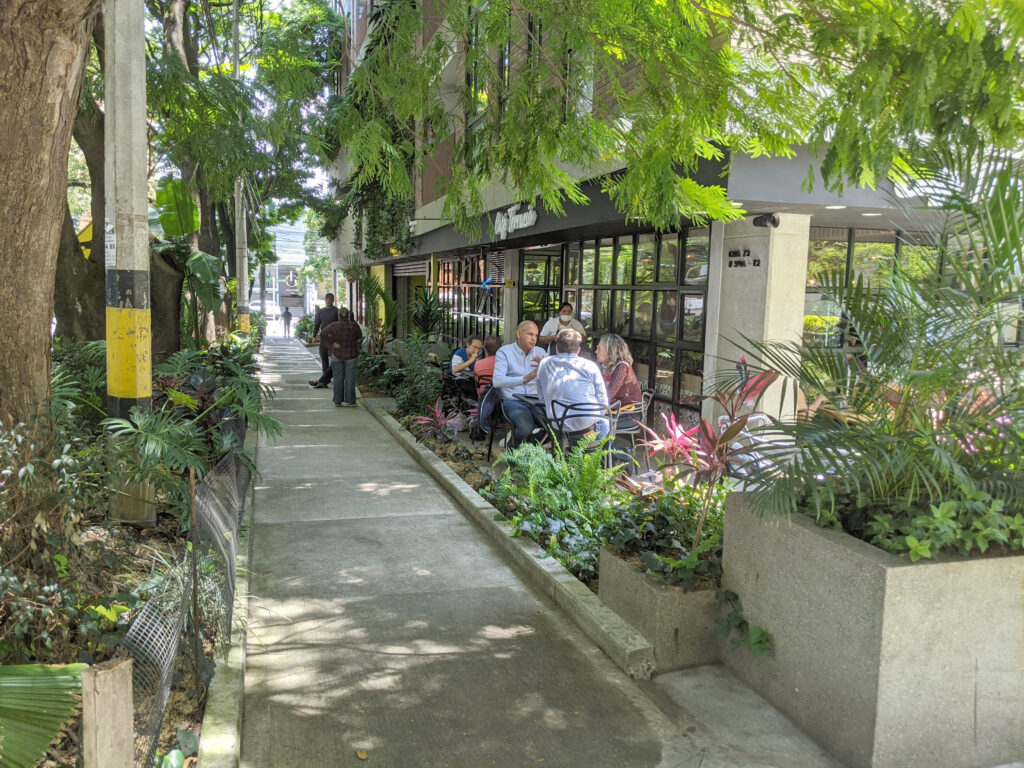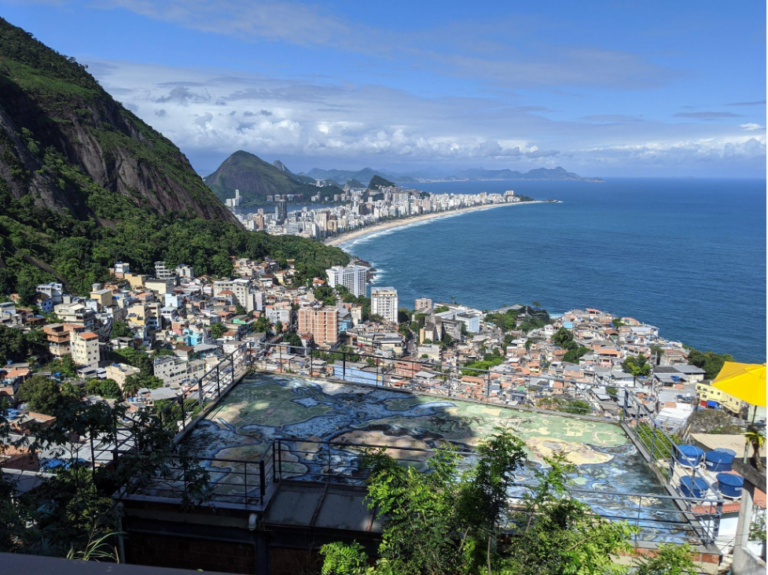Latin America Should Upgrade Rather Than Demolish ‘Favelas’
By Scott Beyer | November 16, 2023
Some developing countries are making the same urban-renewal mistakes made by the United States in the post-war era. Sensible market-oriented policies can transform slums into safe and decent neighborhoods rather than simply displacing poor people.
City life in the developing world is characterized – sometimes dominated – by informal settlements. These tightly-packed “slums” provide homes for over a billion people across the developing world, as population shifts from rural to urban areas. They’re overcrowded, unsanitary and without basic utilities that we in the United States take for granted.
But they’re not necessarily failures, even if that’s how locals sometimes view them. Latin American ones in particular have evolved into complex, upwardly-mobile economies, and razing them – as there is political pressure to do – would mirror the same urban-renewal mistakes of the post-World War II United States. These neighborhoods can be made safe and clean – and examples exist of them being transformed even into tourist destinations.

Read Scott Beyer’s new Free Cities Center book on Latin America’s urban experience.
For context on how ugly this can get, look first to Africa. Some slums there exist due to apartheid regimes that were designed to segregate certain racial or tribal groups. Other slums just grow from rapid urbanization. Either way, they’re constantly threatened by the government wrecking ball.
One example is Nigeria’s Makoko. Based along the Lagos shoreline, it’s built on wooden stilts above-water and residents navigate via canoe. Makoko has no formal government, instead being governed along tribal lines, with chiefs controlling water and property rights and providing security. The entrepreneurial settlement has developed trading relationships across Lagos and other mainland regions, but the state has threatened it with demolition, and some parts have already been razed.
Other African countries take an even harder line. In Ethiopia, over 64% of the urban population lives in slums. In the 1990s this was 95%, but civil conflict led to mass evictions, often along tribal lines. When visiting Addis Ababa in May, I saw firsthand where functional slums were being torn up and residents moved to outlying government projects that aped the U.S. public housing of the 1960s. On the land where slums existed, the city authorized large modern high-rises that average Ethiopians can’t afford.
Read Scott Beyer’s article on what California can learn from African buses.
Africa is rife with these slum-clearance examples. At root to the problem is weak property rights and lack of land title. For example, Ethiopia’s laws give the government broad ability to seize land – particularly informal settlements – because the government itself owns much of it. The Democratic Republic of Congo fully controls land, a policy dating to the post-colonial period, when newly independent governments sought to prevent foreign land ownership. The result is a lack of personal autonomy, mass human resettlement, and the inability for neighborhoods to evolve beyond their organic “slum” status.
These tactics mirror the U.S. “urban renewal” before and after World War II. A mix of federal, state and local government subsidies combined to brazenly violate property rights, displace residents and ultimately damage urban areas’ competitiveness, as some of the most economically-productive areas were replaced with highways and public housing.
Latin America also has some slum clearance. In advance of the World Cup and 2016 Olympics, Rio de Janeiro evicted 19,000 families to build a stadium and infrastructure projects. In 2015, the Mexican government released proposals to condemn some Mexico City slums on the basis that they were vulnerable to extreme weather. Other smaller examples exist here and there.
But overall the region takes a different approach. Here, too, slums are common, and some date to the 19th century, such as Brazil’s favelas. They deal with the same problems as African ones – infrastructure failure, disease, gang violence. But the political incentives generally forbid clearance – which would cause mass populist revolts from within those communities – and swing towards integrating the neighborhoods into the larger city. Specifically, these slums originate through informal, illegal invasions of public land; but as they evolve into a sizable community and political bloc, the city begins improving them.


Medellín’s Comuna 13 is the top example. The city was long notorious for cartel violence. In 1993, it recorded 381 murders per 100,000 residents, a figure that makes David Dinkins era New York look tame – and much of this violence was from slums. In the decades following, the government aggressively moved against the cartels by using these neighborhoods as military bases and negotiating truces. The reduction in violence has endured, and Medellín is now an international destination.
Simultaneously, the city improved quality of life and accessibility in neighborhoods like Comuna 13. There is a natural physical barrier between these hill slums and the rest of the city. So authorities built unique transportation links, such as aerial tramways and hillside escalators, both of which today transport millions of riders. Tramway systems have been built in other hilly slums within Bogota, Rio de Janeiro and Caracas. Additional upgrades to Comuna 13 included new schools, parks, and gardens; today it is a tourist attraction.
Brazil took a similar tack. With cartel violence rising, the government created militarized police units dedicated to “pacifying” favelas. The units sought to ingratiate themselves with neighborhood residents, and this carrot-and-stick approach has had the long-term effect of reducing violence. Favelas like Vidigal and Rocinha draw tourists and are seeing some lots get redeveloped into formalized housing.

Other government improvements are more standard – paved roads, water and sewage extension, etc. – and, along with private-sector rehabilitation of buildings and lots, add value to these neighborhoods. While traveling Latin America, I saw many examples beyond just Rio de Janeiro and Medellin of slums that had genuine promise. They’re often centrally-located, walkable and full of bottom-up entrepreneurship. They embody many of the same qualities that Jane Jacobs wrote about in the U.S. “slums” that got razed by the federal government.
This is why the pacification plus improvement strategy has been a smart move by Latin American governments. It’s a way to avoid the mistakes made decades ago by the United States. It recognizes the need for bettering these slums, while also recognizing that this occurs naturally through the work of individuals within the neighborhood. If this tradition of public and private improvement continues, these informal areas that technically began as “slums” should in a matter of decades be far more advanced.
Scott Beyer owns Market Urbanism Report and is author of the Free Cities Center book, “Latin America’s Urban Experience: How markets help developing countries cope with government dysfunction.”
